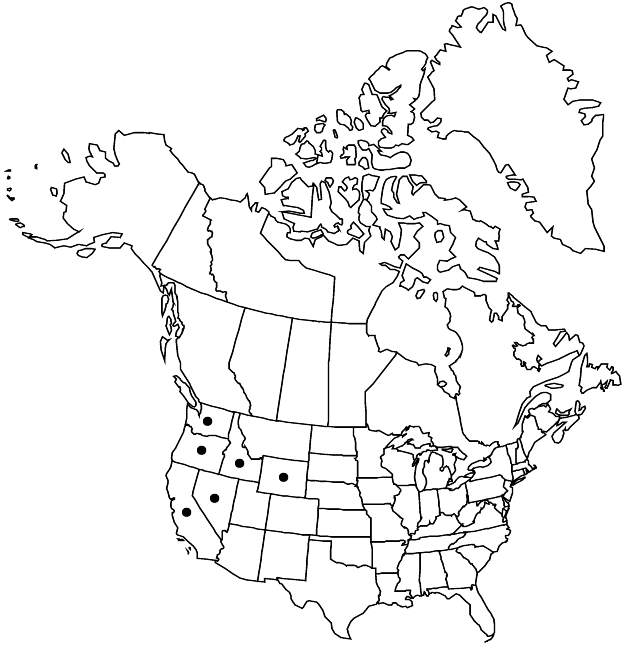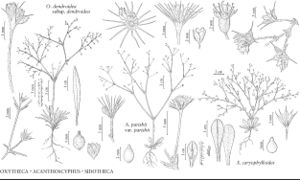Difference between revisions of "Oxytheca dendroidea subsp. dendroidea"
FNA>Volume Importer |
FNA>Volume Importer |
||
| Line 1: | Line 1: | ||
{{Treatment/ID | {{Treatment/ID | ||
|accepted_name=Oxytheca dendroidea subsp. dendroidea | |accepted_name=Oxytheca dendroidea subsp. dendroidea | ||
| − | |accepted_authority= | + | |accepted_authority= |
|publications= | |publications= | ||
|common_names=Treelike puncturebract | |common_names=Treelike puncturebract | ||
| Line 29: | Line 29: | ||
-->{{#Taxon: | -->{{#Taxon: | ||
name=Oxytheca dendroidea subsp. dendroidea | name=Oxytheca dendroidea subsp. dendroidea | ||
| − | + | |authority= | |
| − | |authority= | ||
|rank=subspecies | |rank=subspecies | ||
|parent rank=species | |parent rank=species | ||
| Line 44: | Line 43: | ||
|publication year= | |publication year= | ||
|special status= | |special status= | ||
| − | |source xml=https://jpend@bitbucket.org/aafc-mbb/fna-data-curation.git/src/ | + | |source xml=https://jpend@bitbucket.org/aafc-mbb/fna-data-curation.git/src/f50eec43f223ca0e34566be0b046453a0960e173/coarse_grained_fna_xml/V5/V5_908.xml |
|subfamily=Polygonaceae subfam. Eriogonoideae | |subfamily=Polygonaceae subfam. Eriogonoideae | ||
|genus=Oxytheca | |genus=Oxytheca | ||
Revision as of 22:57, 16 December 2019
Plants erect to spreading, 0.4–4 × 0.3–4.5 dm. Stems sparsely to densely glandular. Leaf blades linear to linear-oblanceolate, 1–4.5 × 0.1–0.7 cm, densely hirsute, sparsely glandular. Inflorescences open to diffuse, 0.5–4 dm; bracts (2–)3(–4) at first node, otherwise 2–3 and distinct or basally connate, linear to subulate or triangular, 1–18 × 0.5–4 mm, scalelike or sometimes leaflike, hirsute and glandular; awns 0.2–0.5 mm, often absent at distal nodes. Peduncles occasionally absent at distal nodes, erect or deflexed, slender, 0.5–1.5 cm. Involucres 1–2 mm, typically glabrous, rarely with few scattered hairs abaxially; teeth (3–)4; awns grayish, 0.5–3 mm. Flowers 2–6; perianth white to pink, 1–2 mm, glabrous or strigose and sparsely glandular abaxially; tepals dimorphic, margins essentially entire, those of outer whorl elliptic to ovate and pubescent adaxially, those of inner whorl elliptic or oblong to narrowly ovate and glabrous or sometimes strigose adaxially proximally; filaments 0.5–1.5 mm, glabrous; anthers cream to red, oval, 0.2–0.3 mm. Achenes yellow-brown to maroon, 2–2.5 mm. 2n = 40.
Phenology: Flowering Jun–Oct.
Habitat: Dry, sandy to rocky flats, washes, and slopes in mixed grassland, saltbush, sagebrush communities, pinyon and/or juniper and montane conifer woodlands
Elevation: 300-3000 m
Distribution

Calif., Idaho, Nev., Oreg., Wash., Wyo.
Discussion
Subspecies dendroidea is common and widespread in western North America from southeastern Oregon to southwestern Wyoming southward into eastern California (as far south as Inyo County), Nevada (to Nye County), but surprisingly unknown from northern Utah. Populations in Washington and Wyoming are extensions of the Snake River Plains populations found in Idaho.
Selected References
None.
